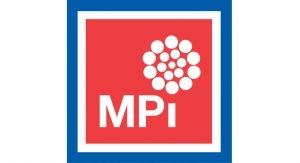INTRODUCTION
Coating formulators now have the ability to modify the tactile surface properties of their products with MicroTouch. Based on aliphatic polyurethane technology, MicroTouch additives are micron-sized elastic particles that distort when disturbed by a physical force (such as finger touch or abrasive action) and then return to their original spherical shape when the force is removed. These products can be used in combination with many different types of coating resins to achieve effects that range from satiny smooth to leathery to rubbery. MicroTouch additives are highly resilient particles that can be used to modify and enhance the feel of a coating surface. These additives will provide a matte appearance as well as superior scratch, burnish, and mar resistance. MicroTouch additives are available in several particle sizes, each of which brings different tactile properties. MicroTouch additives are an ideal alternative to formaldehyde-based materials such as polyureas
MicroTouch additives will improve chemical resistance and hydrolytic stability. Taber abrasion resistance can be dramatically improved with an addition of 2-3% of MicroTouch.
MicroTouch additives can be used to modify coatings designed for plastics, metals, paper, wood, leather, and other textiles. Common industrial applications include electronics (computers, laptops, mobile phones), automotive interiors, wall coverings, parquet and vinyl flooring, inks, and furniture.
Coating formulators now have the ability to modify the tactile surface properties of their products with MicroTouch. Based on aliphatic polyurethane technology, MicroTouch additives are micron-sized elastic particles that distort when disturbed by a physical force (such as finger touch or abrasive action) and then return to their original spherical shape when the force is removed. These products can be used in combination with many different types of coating resins to achieve effects that range from satiny smooth to leathery to rubbery. MicroTouch additives are highly resilient particles that can be used to modify and enhance the feel of a coating surface. These additives will provide a matte appearance as well as superior scratch, burnish, and mar resistance. MicroTouch additives are available in several particle sizes, each of which brings different tactile properties. MicroTouch additives are an ideal alternative to formaldehyde-based materials such as polyureas
MicroTouch additives will improve chemical resistance and hydrolytic stability. Taber abrasion resistance can be dramatically improved with an addition of 2-3% of MicroTouch.
MicroTouch additives can be used to modify coatings designed for plastics, metals, paper, wood, leather, and other textiles. Common industrial applications include electronics (computers, laptops, mobile phones), automotive interiors, wall coverings, parquet and vinyl flooring, inks, and furniture.













